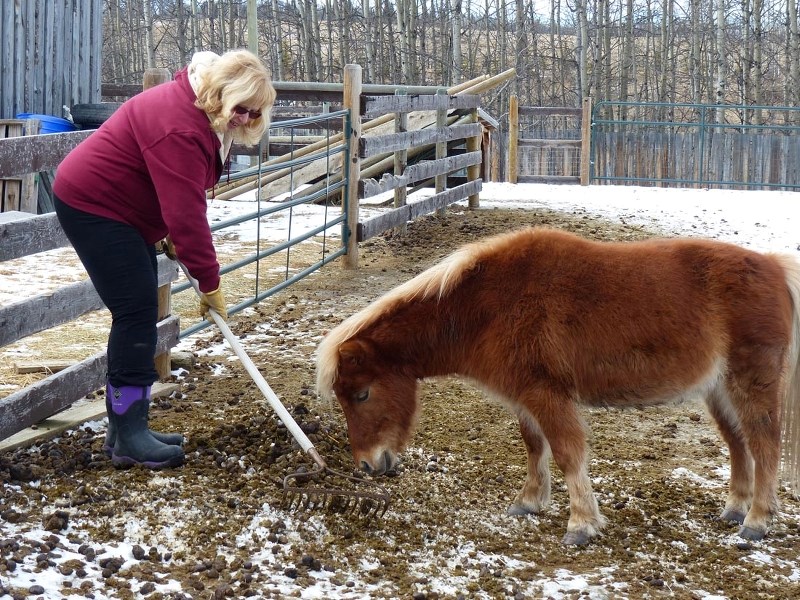Waste management is one of the key elements contributing to having a healthy horse.
When you consider that a horse produces from 40 to 50 lbs of manure a day (which translates to seven to nine tons per year!) then you need to have a plan for dealing with all of that throughout the seasons. The smaller the area your horse lives in, the bigger the problem becomes for manure management.
So why should you care if manure builds up in the wintertime – it will just go away in the spring – right? Wrong.
You should be concerned because manure buildup contributes to survival of internal parasites in your horse and impacts hoof health. Internal parasite eggs and larvae shed into the manure and are remarkably resilient. If your horse is feeding in an area where there is manure on the ground, chances are good he is re-ingesting those parasites – yech! Particularly in the wintertime, there comes a point where the horses are eating and pooping in the same place.
Another nasty impact of horses standing or walking in the toxic mess of manure, mud and urine that can accumulate is development of thrush in the feet. Thrush is a very harmful bacterial infection that slowly eats away at the tissue of the hoof and yes, it can occur in the wintertime in freezing conditions. One of my horses had lost part of his frog due to thrush in the middle of the winter – the horse lives outside 24/7 in a large pasture (access to 20 acres) but still developed thrush even though the snow was over a foot deep for the previous two months. He is fine now and all is well – just needed to treat twice then clean out his feet on a more regular basis.
So, for winter in Alberta, how do you manage the manure? If your horses are kept in smaller pens or turnouts, you really should be out there removing the manure on a regular basis when weather and ground conditions permit. For my minis, I try and get out to at least rake the manure into piles for later removal. Quite often my geldings will come and deposit fresh manure on the piles – perhaps a remnant of their days as a stallion marking territory.
Removed manure can be composted or spread to kill the eggs and larvae. Pastures can be harrowed to break up the piles and spread the manure. Stockpiles of manure can be hauled away annually.
Please note that your piles of manure should not be anywhere near bodies of water, wells, property lines or residences.
Whatever plan you implement, it is important to manage manure to ensure the good health of your horse.




